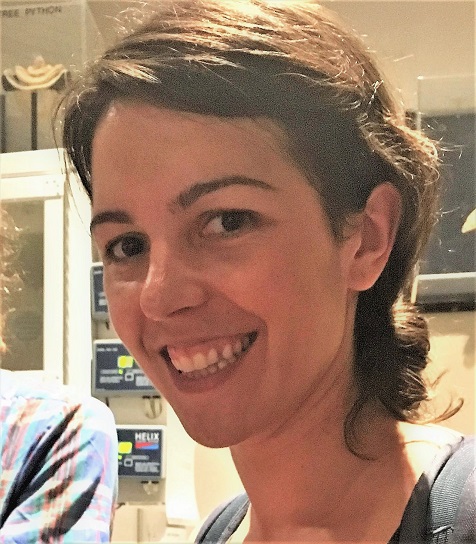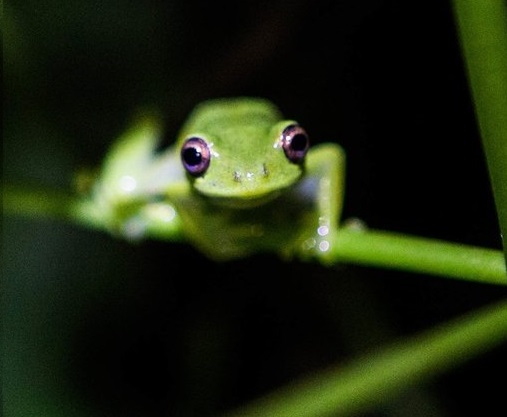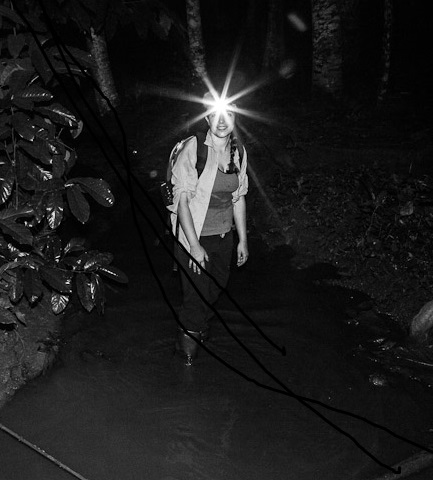 Dr. Rayna C. Bell
Dr. Rayna C. Bell
Research Zoologist, Curator of Amphibians + Reptiles
Department of Vertebrate Zoology
National Museum of Natural History
Smithsonian Institution
www.raynacbell.com
Start date: November 2015
PhD: Department of Ecology + Evolutionary Biology, Cornell University; advisor Dr. Kelly Zamudio
Postdoc: [Chancellor’s Postdoctoral Fellow] Museum of Vertebrate Zoology + Department of Integrative Biology, University of California Berkeley; advisor Dr. Jimmy McGuire
About NMNH:
The NMNH hosts seven million public visitors per year and maintains the largest and most comprehensive natural history collection in the world. The Department of Vertebrate Zoology is composed of research scientists and museum specialists who conduct specimen-based research and provide access to the national collection. Research scientists/curators maintain organism-focused research programs, oversee growth and use of the collection, and participate in public outreach and education.
About your research:
As an organismal evolutionary biologist, I am broadly interested in identifying mechanisms that generate ecological and evolutionary diversity in amphibians and reptiles. Currently, my research program addresses questions in three areas: 1) micro-evolutionary processes that shape population differentiation, 2) evolution of novel coloration phenotypes, and 3) evolution of the frog visual system. Underpinning these three broad areas, my research is motivated by biodiversity discovery and capacity building for research and conservation in Central Africa.
What has been the biggest challenge as a new PI so far?
My first week on the job, one of the newer curators at NMNH warned me that learning to say “no” is key to staying sane and actually getting your research done. I think this advice holds for most new PIs and with so many tempting research and non-research opportunities at the Smithsonian, it’s been harder to implement than I expected! So far I’ve said “no” to one service commitment and two field expeditions, and I felt guilty and serious FOMO each time. Lots of room for improvement! It’s also been challenging for me to find uninterrupted blocks of time to write or analyze data, so I recently started hiding out in a coffee shop a couple mornings each week.
Are you recruiting? If so, how do you/will you choose new lab members?
Yes! We have an amazing fellowship program at the Smithsonian and an NSF-REU site at NMNH that provide opportunities for researchers at different career stages (postdoctoral, graduate and undergraduate students) to spend time working with scientists and the collections. I’m not currently affiliated with a graduate program so I don’t formally advise graduate students, but I really enjoy mentoring postdocs and hosting visiting students through these programs. Our main criteria in the selection process are the intellectual merit of the proposed research and how the applicant will leverage the national collections and our research facilities through their project.
Do you remember your first publication in Evolution?
Of course! My first (and thus far, only) publication in Evolution is one of my dissertation chapters “Reed frog diversification in the Gulf of Guinea: overseas dispersal, the progression rule, and in situ speciation”. Having my work accepted in our society journal – where so many timeless papers are published – felt like a major accomplishment, and I was lucky to have reed frogs featured on the cover! Other than being my first Evolution paper, this particular publication really stands out for me because about a week after I submitted the manuscript, my computer was stolen. I’d been traveling so my most recent backup was over a month old. I was so relieved that the most recent versions of the files were safe in the manuscript submission site and that I didn’t lose everything!
Besides research, how do you promote science?
Being based at a natural history museum provides lots of opportunities to promote science and interact with a broad public audience. This can range from three-minute “big picture” research presentations for our board members to events in our Q?rius science education space where visitors interact one-on-one with museum scientists. As curators, we also get information requests from science journalists and field a lot of random questions from the general public, so I’m always working to improve my science communication skills.
What one piece of advice would you give to a starting graduate student?
If you’re serious about the academic track, take ownership of your graduate education and start acting like a mini-PI. This means building a research program that you can call your own by the time you defend, applying for research grants, developing collaborations inside and outside of your institution, presenting your work at professional meetings, mentoring undergraduate researchers, and getting teaching experience (beyond being a TA). Also, take time to celebrate milestones and remember that this is supposed to be fun!
What do you enjoy doing in your free time?
Defending my vegetable garden from urban wildlife and learning to play ukulele.
 Dr. Rayna C. Bell
Dr. Rayna C. Bell
